Cambridge Healthtech Institute ’s 2nd Annual
Continuous Processing for Biopharmaceuticals
Improving Process Intensification and Control
19-20 March 2019
Cambridge Healthtech Institute’s Continuous Processing for Biopharmaceuticals conference focuses on the practical challenges of developing, integrating and implementing continuous processing in biopharmaceutical manufacturing. Key topics include
process development from perfusion to purification, process control, robustness and monitoring, viral safety, cost analysis, and ramping up for commercialization, all in line with international regulations.
Final Agenda
Monday, 18 March
13:00 - 16:00 Recommended Short Course*
SC1: Continuous Processing Masterclass
Instructor:
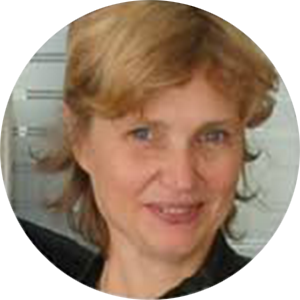 Margit Holzer, PhD, Owner, Ulysse Consult
Margit Holzer, PhD, Owner, Ulysse Consult
The manufacture of biopharmaceuticals using semi- or fully continuous processes has the potential to improve product quality and increase the productivity of biomanufacturing facilities. This short course details the principles and practical challenges
of implementing a continuous process strategy. Using examples and shared experiences, the course covers continuous processing definitions and drivers, technologies and processes, process development and control, and quality considerations.
*Separate registration required.
Tuesday, 19 March
7:00 Registration and Morning Coffee
8:25 Chairperson’s Opening Remarks
Alois Jungbauer, PhD, Professor, Department of Biotechnology, University of Natural Resources and Life Science, Vienna, Austria and Austrian Centre of Industrial Biotechnology
8:30 FEATURED PRESENTATION: Continuous Manufacturing: Transitioning from Batch to Continuous Economics Implications
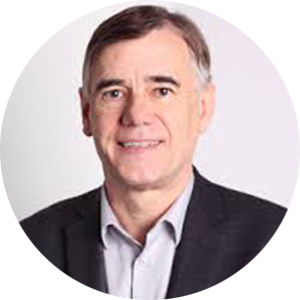 Andrew Sinclair, President & Founder, Biopharm Services Ltd.
Andrew Sinclair, President & Founder, Biopharm Services Ltd.
In the transition from batch to continuous processing, it is important to assess the impact of continuous operation in downstream processing and to determine the optimal level of continuous technology integration. In this analysis, bioprocess modelling
is used to assess the level of continuous technology that makes economic sense. The basis of the process model is that standard monoclonal antibody process defined by Biophorum’ s technology roadmap team. This is used as a reference measure
the impact of innovative technologies.
9:00 Development of Perfusion Scale-Down Models for Medium Development
 Amy Johnson,
PhD, Associate Director, Cell Culture and Media Development, Regeneron
Amy Johnson,
PhD, Associate Director, Cell Culture and Media Development, Regeneron
Due to the complex nature of bioreactor medium, high throughput scale-down models that simulate the perfusion bioreactor system while supporting large multivariate design of experiment approaches are necessary. For that purpose, two models were developed,
optimized, and applied for perfusion medium development. With this first-generation perfusion medium, a cell line developed for fed-batch application achieved over 3-fold increase in productivity.
9:30 More than 15 Years of Continuous Processing Using Chemostat Cultures – Turning Concepts into Reality
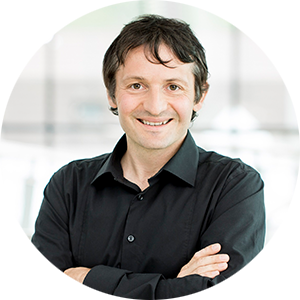 Daniel Fleischanderl, Manager, Process Development, Shire
Daniel Fleischanderl, Manager, Process Development, Shire
The talk summarizes Shire’s almost unique approach using continuous chemostat cultures for routine commercial production of blood clotting factors. It describes the process, the technology and obstacles applying this approach. The main part will
elaborate on scaling up beyond 10k and transfer to single use.
 10:00 Grand Opening Coffee Break in the Exhibit Hall with Poster Viewing
10:00 Grand Opening Coffee Break in the Exhibit Hall with Poster Viewing
10:45 Definition of Batch/Lots in Continuous Biomanufacturing
 Alois Jungbauer, PhD, Professor, Department of Biotechnology, University of Natural Resources and Life Science, Vienna, Austria and Austrian Centre of Industrial Biotechnology
Alois Jungbauer, PhD, Professor, Department of Biotechnology, University of Natural Resources and Life Science, Vienna, Austria and Austrian Centre of Industrial Biotechnology
In continuous biomanufacturing the batch/lot is defined analogous to batchwise manufacturing. The batch/lot refers to a certain amount of product or to a time-span in which the product has been generated. In an integrated continuous production unit with
a wide residence time distribution the discrimination of two lots is not simple especially if a sometime points the operation was out of range. Modeling the residences time distribution of entire process help to define lots and when the process has
returned to the acceptable operating range after process disturbances.
11:15 KEYNOTE PRESENTATION: Breaking Barriers to Manufacturing: Innovation with Continuous Flow Technology
 Marcus Fiadeiro, PhD, Associate Director, DSP Continuous Manufacturing, Sanofi
Marcus Fiadeiro, PhD, Associate Director, DSP Continuous Manufacturing, Sanofi
11:45 Co-Presentation: To Switch from Chromatography Skid to DSP Skid: What For?
Thomas Flouquet, Application Specialist, Equipment Process Solutions, Novasep
Abir Banerjee, Deputy General Manager, Ensene Biosciences Ltd
Today most of the biopharma companies are looking to implement continuous intensified processes in order to reduce the costs of drugs production. Thomas Flouquet will present how to develop the smartest process ever by combining multi-column and batch
chromatography on a single DSP unit and the main associated benefits (productivity boost, COGs and footprint reduction and better product quality). Be ready for a revolution!
12:15 Luncheon Presentation (Opportunity Available)
13:30 Chairperson’s Remarks
Margit Holzer, PhD, Scientific Director, Ulysse-Consult
13:35 Asynchronous Chromatography: The Hidden Limitations of Harmony and the Surprising Benefits of Discord
 Michael
Rose, Senior Scientist, Downstream Prcessing Department, UCB
Michael
Rose, Senior Scientist, Downstream Prcessing Department, UCB
As biopharma struggles under tightening budgets, competition and complex molecule formats, efforts are underway to intensify manufacturing. Periodic Counter Current (PCC) and Multi-Column Solvent Gradient Purification (MCSGP) are continuous systems that
improve capacity, buffer use, productivity, yield and purity. We take a deep look at hidden pitfalls in these emerging multi-column technologies and suggest mitigation strategies. We also introduce two new techniques that adapt MCC concepts on traditional
column systems and maximise performance while minimising complexity.
14:05 An Integrated Multistep Purification Approach Including Online Monitoring
 Florian
Dismer, PhD, Downstream Technologies, Global Research Technologies, Novo Nordisk
Florian
Dismer, PhD, Downstream Technologies, Global Research Technologies, Novo Nordisk
The presentation targets reduction of lead times for both process development and variant production by combining a fully automated, closed modification and purification platform with online and very fast at-line analytics. The combination of both technologies
could potentially result in a generic, scalable setup that can be used independent of the molecular format of interest and does not require affinity purification steps. Here a case study is presented to show an end-to-end purification platform combined
with the analytical power of a diode-array detector for the production of an enzymatically modified peptide variant.
14:35 Real Continuous Downstream Processing without Cycling Operation
Alois Jungbauer, PhD, Professor, Department of Biotechnology, University of Natural Resources and Life Science, Vienna, Austria and Austrian Centre of Industrial Biotechnology
In continuous downstream processing a cyclic or a quasi-continuous operation is required when the product is adsorbed on a chromatography sorbent. A process for purification of antibodies is shown which is truly continuous with non-interrupted flow of
the product stream. This allows the implementation into a fully continuous integrated process.
15:05 Refreshment Break in the Exhibit Hall with Poster Viewing
15:45 Continuous Virus Inactivation Process Using a Novel Packed-Bed Reactor
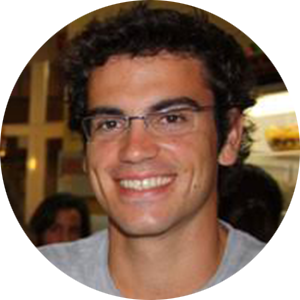 Duarte L. Martins, PhD Student, BOKU/ACIB, Laboratory of Protein Technology and Downstream
Processing, Department of Biotechnology, University of Natural Resources and Life Sciences (BOKU)
Duarte L. Martins, PhD Student, BOKU/ACIB, Laboratory of Protein Technology and Downstream
Processing, Department of Biotechnology, University of Natural Resources and Life Sciences (BOKU)
Continuous virus inactivation has been overlooked while the biopharma industry moves towards continuous integrated processing. A novel continuous virus inactivation setup, which has several advantages over other approaches, will be presented. Solvent/detergent
treatment was successfully employed for the continuous virus inactivation of two-industry standard virus models (X-MuLV and BVDV). Control experiments are presented showing that the continuous setup is as effective as the batch incubation.
16:15 Toward the implementation of Integrated Continuous Bioprocessing for Monoclonal Antibody Manufacturing. From Bench Scale to GMP Production.
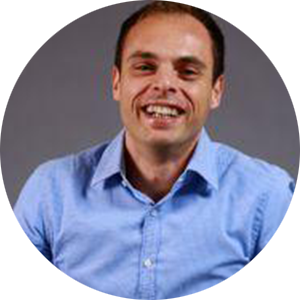 Matteo Costioli, PhD, Director, Early Process Development, Biopharma, Merck
Matteo Costioli, PhD, Director, Early Process Development, Biopharma, Merck
In this presentation Merck KGaA key drivers toward adoption of “next-generation” processes are described. Intensified USP processes, from High cell density seeding to full perfusion, are described. In addition, the design of an integrated
and automated continuous downstream processing and its scale up to 2000KL will be also discussed.
16:45 Breakout Discussion Groups
This session provides the opportunity to discuss a focused topic with peers from around the world in an open, collegial setting. Select from the list of topics available and join the moderated discussion to share ideas, gain insights, establish collaborations
or commiserate about persistent challenges. Then continue the discussion as you head into the lively exhibit hall for information about the latest technologies.
17:30 Welcome Reception in the Exhibit Hall with Poster Viewing
Wednesday, 20 March
8:00 Registration and Morning Coffee
8:25 Chairperson’s Remarks
 Michael Sokolov, PhD, Scientist Institute of Chemical and Bioengineering, ETH Zurich and
COO and Co-Founder , DataHow
Michael Sokolov, PhD, Scientist Institute of Chemical and Bioengineering, ETH Zurich and
COO and Co-Founder , DataHow
 8:30 What Can We Learn from Other Industries: Establishing an Effective Data Analysis Paradigm from Disparate Data Sets
8:30 What Can We Learn from Other Industries: Establishing an Effective Data Analysis Paradigm from Disparate Data Sets
Krista Novstrup, Principal Analytics Engineer, Seeq Corporation
Whether in batch or continuous processing, pharmaceutical companies continue to invest significant resources in the development of their pipelines, generating significant data assets in the process. These data assets often go underutilized resulting in
wasted resources and time, while learnings are also difficult to capture and track long-term. An effective combination of process analytical technology (PAT) and data analytics applications can address these challenges, while driving improved process
implementation and ultimately improving product quality in a continuous process. This presentation will share real-world examples from pharma and other industries that can be used to shape an effective continuous manufacturing strategy.
9:00 Process Control Strategies of Integrated Continuous Downstream Processes
 Margit Holzer, PhD, Scientific Director, Ulysse-Consult
Margit Holzer, PhD, Scientific Director, Ulysse-Consult
Chromatographic process development and modeling helps to define the initial process design. Further characterization studies allow one to confirm process ranges and give indications for the equipment design. Exploitation and understanding of PAT data,
like pH, conductivity, UV traces, allow one to find further process control mechanisms. Different process control levels can then be defined for continuously run chromatography processes. Based on a case study, process control strategies will be illustrated
and discussed during the talk.
9:30 Towards Industry 4.0 - Process Data Management and Analysis for Automated and Digitalized Bioprocessing
 Michael Sokolov, PhD, Scientist Institute of Chemical and Bioengineering, ETH Zurich and
COO and Co-Founder , DataHow
Michael Sokolov, PhD, Scientist Institute of Chemical and Bioengineering, ETH Zurich and
COO and Co-Founder , DataHow
Several important trends have been observed in bioprocessing towards more robust and automated operations. Continuous bioprocessing and data acquisition as well as the utilization of data- and knowledge-driven tools for process analysis and control thrive
towards the standards of industry 4.0. Based on industrial case studies this presentation will highlight the enabling role of advanced process modeling for bioprocess digitalization and automation.
 10:00 NEW: Why, How, When Outsourcing Buffers: Footprint Challenges in Downstream Processing
10:00 NEW: Why, How, When Outsourcing Buffers: Footprint Challenges in Downstream Processing
Elisabeth Guilloux, Head, Cell Culture Media EMEA, Sartorius Stedim FMT S.A.S
Preparing buffers is a not a value adding activity in the manufacture of biologics but requires considerable resources. Buffer preparation takes investment in time and can be challenging to achieve the target specification. Performing the necessary quality
tests incurs further costs. Management of the supply chain for the myriad of individual components is also time consuming.
10:30 Coffee Break in the Exhibit Hall with Poster Viewing
11:15 Chairperson’s Remarks
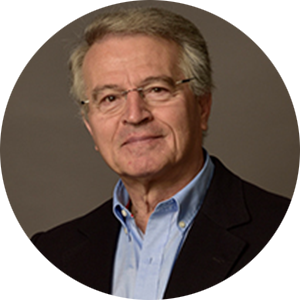 Manuel Carrondo, PhD, Professor of Chemical and Biochemical Engineering, FCT-UNL; Vice
President, IBET
Manuel Carrondo, PhD, Professor of Chemical and Biochemical Engineering, FCT-UNL; Vice
President, IBET
11:20 Bioprocessing Innovations in the Era of Clinical Acceleration and Process Intensification

Stefanos Grammatikos, PhD, Vice President, Head, Biotech Sciences, UCB Pharma
Current trends in clinical development acceleration and bioprocess intensification impose an unprecedented compression of CMC development timelines and new bioprocessing challenges downstream of the cell culture bioreactor. In this talk I will present
a series of innovations we have introduced, some incremental and some potentially disruptive, in an effort to avoid further complications while rising to the latest challenges of bio CMC development and bioprocessing.
11:50 Opportunities and Challenges in CAR T Manufacturing
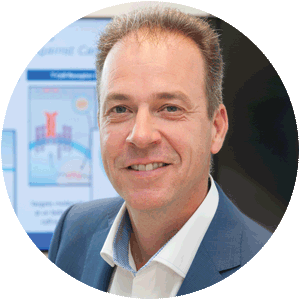
Markwin Velders, PhD, Vice President, Operations, Managing Director, Kite Pharma EU B.V.
Update on the status of CAR-T development for use in the treatment of cancer. The success story of this paradigm shift and the challenges and opportunities that lay ahead for this therapy will be presented and discussed.
12:20 End of Conference
12:30 Bridging Luncheon Presentation (Sponsorship Opportunity Available) or Enjoy Lunch on Your Own